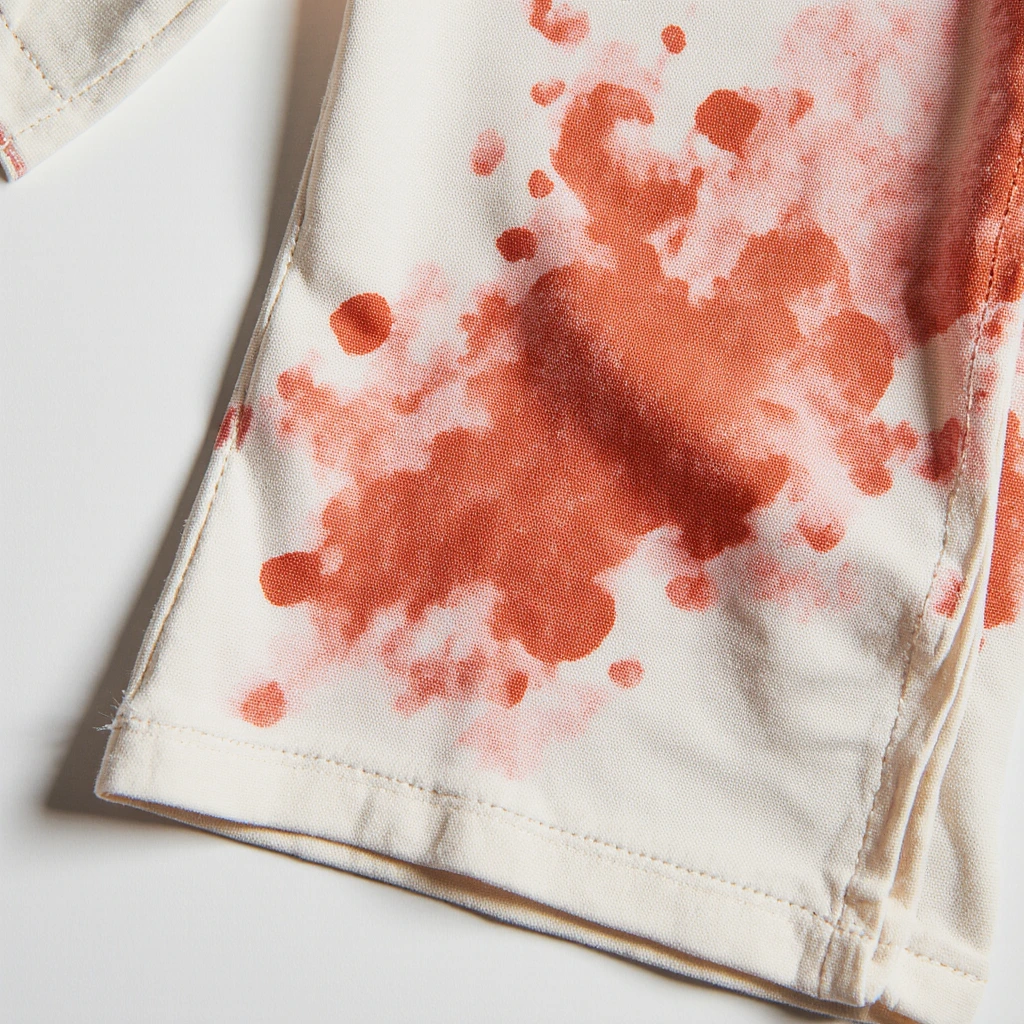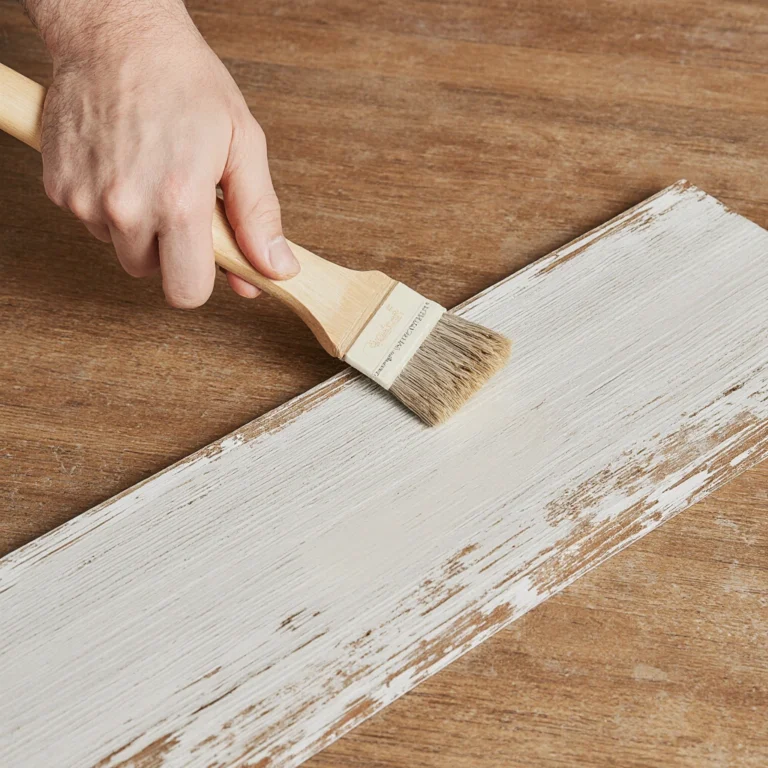How to Get Acrylic Paint Out of Clothes: The Ultimate Stain Removal Guide
Table of Contents
Did you spill acrylic paint on your favorite shirt? Don’t worry! Learning How to Get Acrylic Paint Out of Clothes is easier than you think when you know the right techniques. Whether you’re dealing with wet paint stains from your latest art project or discovering dried acrylic stains on your clothes, this comprehensive guide will walk you through proven methods to restore your clothes to their original condition. From immediate action steps to advanced removal techniques, we’ll cover everything you need to protect your clothes from permanent paint damage.
Understanding Acrylic Paint’s Interaction with Fabrics
Before delving into removal methods, it’s important to understand what makes removing acrylic paint from clothes so difficult. Acrylic paint is water-based, but it contains polymeric bonds that form a flexible and durable outer layer after it dries. When the paint is wet, it remains soluble in water, making it much easier to remove. However, once the paint dries and forms a plastic-like layer on the fabric fibers, removing it becomes more complicated, but not impossible.
Key factors affecting the success of paint removal include the type of fabric, the age of the paint, and the removal method used. Natural fibers, such as cotton and linen, typically respond better to paint removal techniques than synthetic materials like polyester or nylon. Understanding these basics will help you choose the method that’s best for your situation.
Immediate Action Steps for Removing Wet Acrylic Paint
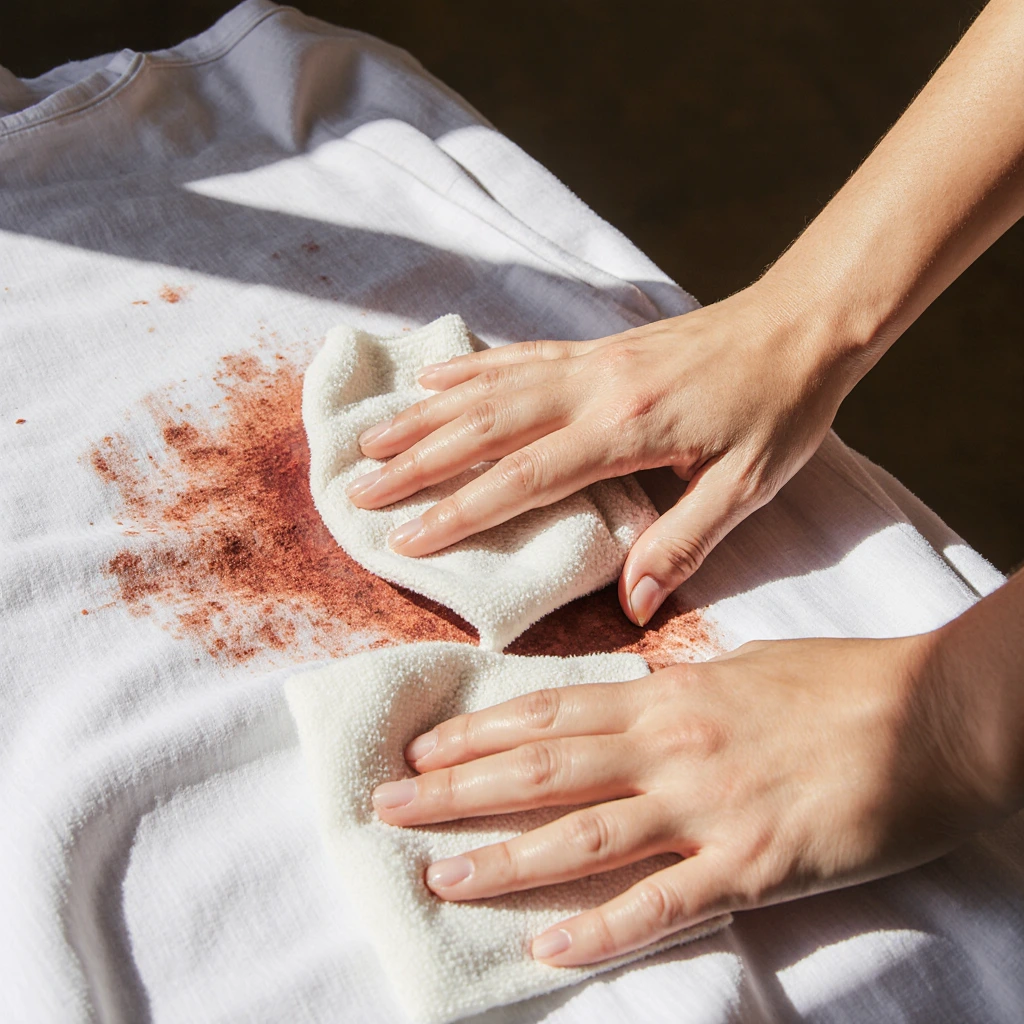
When you notice fresh acrylic paint on clothing, time is of the essence. Quick action can mean the difference between completely removing the stain and permanently damaging the fabric. Here’s a step-by-step emergency protocol:
Step 1: Don’t Let It Dry
Remove excess paint immediately using a spoon or dull knife. Scrape gently to avoid pushing the paint deeper into the fabric fibers. Never rub wet paint, as this spreads the stain and reinforces it.
Step 2: Rinse with Cold Water
Place the stained area under cold running water, allowing the water to flow through the fabric from the back of the stain. This prevents the paint from penetrating deeper into the fibers. Continue rinsing until the water runs clear.
Step 3: Apply Liquid Laundry Detergent
Apply a small amount of liquid laundry detergent directly to the stain using your fingers or a soft brush. The surfactants in the detergent help break down the paint’s binding agents, increasing its removal effectiveness.
Step 4: Rinse and Repeat
Rinse thoroughly with cold water and assess the stain. If the paint remains visible, repeat the detergent application process. For stubborn wet stains, let the detergent sit for 10-15 minutes before rinsing.
Advanced Techniques for Removing Dried Acrylic Paint
Discovering dried acrylic paint on clothing requires more effective removal methods. Although these techniques are difficult, they successfully remove even hardened paint stains when used correctly.
Rubbing Alcohol Method
Isopropyl alcohol (70% or higher) effectively loosens dried acrylic paint. Apply the alcohol to a clean cloth and dab the stained area, starting from the outer edges and working toward the center. Alcohol softens the paint, allowing it to separate from the fabric fibers. After treating, rinse with cold water and wash the garment as usual.
Heat and Scrape Technique
For thicker paint, use a hair dryer to slightly heat the paint to soften it. After heating, carefully scrape off the loose paint using a plastic scraper or an old credit card. Be careful not to damage delicate fabrics with excessive heat or aggressive scraping.
Acetone Treatment (Use with caution)
Acetone can dissolve acrylic paint, but it may damage some fabrics or cause the color to fade. Test on an inconspicuous area first. If safe to use, apply acetone to a cotton ball and gently dab the stain. Work quickly, as acetone evaporates quickly, and always ensure adequate ventilation.
Commercial Paint Removers
Specialized fabric paint removers are available for stubborn stains. Follow the manufacturer’s instructions carefully, as these products often contain strong solvents that require proper handling and ventilation.
Fabric Paint Removal Strategies
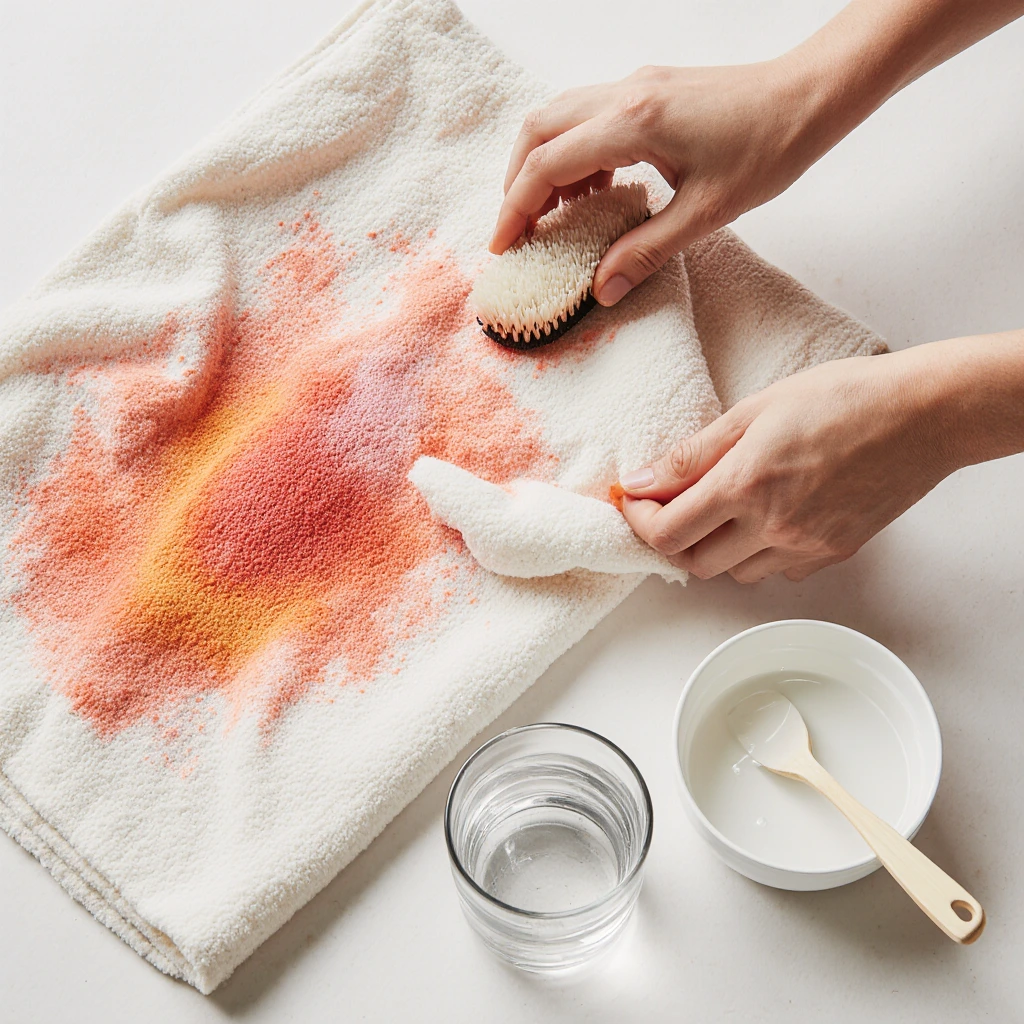
Different fabric types require specific methods for optimal paint removal results. Understanding the composition of your clothing ensures you choose the safest and most effective method.
Cotton and Natural Fibers
The absorbent nature of cotton makes it susceptible to paint penetration, but it also responds well to harsh removal techniques. Use warm water, strong detergents, and even gentle rubbing without fear of damaging the fabric. For white cotton clothes, diluted bleach solutions can help remove stubborn stains.
Synthetic Fabrics
Polyester, nylon, and other synthetics are less absorbent, but they may be more sensitive to chemical treatments. Use mild solvents and avoid excessive heat, which may melt or damage synthetic fibers. Test any chemical treatment on a hidden area first.
Delicate Fabrics
Silk, wool, and other delicate materials require gentle handling. Use lukewarm water and mild detergents, and avoid vigorous rubbing. Consider professional cleaning for expensive or delicate garments with large paint stains.
Denim and Heavy Fabrics
Thick fabrics like denim withstand more vigorous treatment. Use stiff brushes and stronger solvents, and don’t hesitate to scrub vigorously. The dense fabric often prevents the paint from penetrating deeply, making it easier to remove.
Natural and Home Remedies
Many effective paint removal solutions are available in your home, offering safer alternatives to harsh chemicals with impressive results.
Vinegar and Baking Soda Method
Make a paste using white vinegar and baking soda. Apply it to the stain and leave it for 30 minutes. The acetic acid helps loosen the paint bonds, while the baking soda provides a mild abrasive effect. Gently scrub with an old toothbrush before rinsing.
Dish Soap and Ammonia Solution
Mix one tablespoon of dish soap with one tablespoon of ammonia in two cups of warm water. This powerful combination effectively removes paint. Apply the solution, leave it on for 15 minutes, and then rinse thoroughly.
Hairspray Method
Old-fashioned hairsprays that contain alcohol can effectively remove paint stains. Spray the solution directly onto the stain, let it sit for several minutes, then scrub gently and rinse. This method is especially effective with fresh stains.
Hand Sanitizer Treatment
The high alcohol content in hand sanitizer makes it effective at removing paint. Apply a generous amount to the stain, rub it in with your fingers, and let it sit before rinsing. This method is especially suitable for removing stains on the go.
Prevention and Preventative Measures
It’s always better to prevent paint stains than to remove them. Taking proper precautions during painting can save you a lot of time and effort.
Choosing the Right Clothing
Choose old clothes or clothing specifically designed for painting when working with acrylics. Avoid wearing your favorite or expensive clothes during art projects or home improvement projects.
Protective Equipment
Invest in high-quality, disposable aprons, gowns, or overalls. These barriers protect your clothing and allow for freedom of movement during creative activities.
Organize Your Workspace
Maintain a clean, organized, and well-ventilated workspace. Keep cleaning supplies on hand to treat stains immediately. Use protective drop cloths and covers to prevent accidental spills.
Quick Response Kit
Prepare a painting emergency kit containing liquid detergent, rubbing alcohol, clean cloths, and plastic scrapers. Having these items on hand ensures a quick response to painting accidents.
Professional Cleaning Considerations
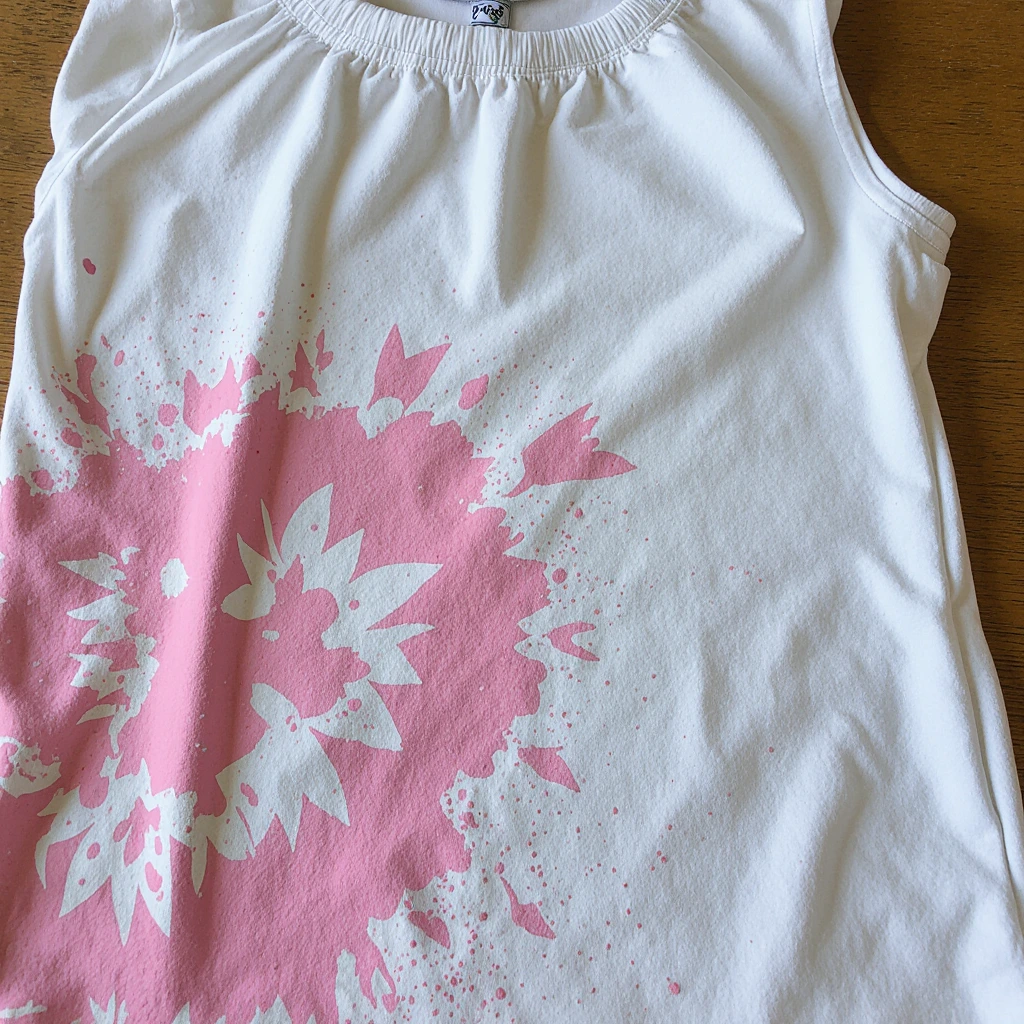
Some situations call for professional dry cleaning services, especially for expensive clothing or stubborn stains that resist home treatment methods.
When to Seek Professional Help
Consider professional cleaning for expensive garments, delicate fabrics, or extensive paint damage. Dry cleaners have specialized solvents and equipment not available to consumers.
Cost-Benefit Analysis
Weigh the cost of professional cleaning against the value of the garment. Sometimes replacing the garment is cheaper than extensive restoration.
Timing Considerations
Don’t delay professional treatment. The longer the paint remains on the fabric, the more difficult it is to remove, even for professionals.
Common Mistakes to Avoid
Understanding what to avoid is just as important as knowing the correct removal techniques. These common mistakes can worsen stains or permanently damage the fabric.
Use Hot Water on Fresh Stains
Hot water sets acrylic paint, making it much more difficult to remove. Always use cold water for pre-treatment.
Scrub Instead of Blotting
Violent rubbing spreads the paint and pushes it deeper into the fabric fibers. Use gentle blotting motions from the edges of the stain to the center.
Mixing Incompatible Chemicals
Never mix different cleaning products, as this can cause dangerous chemical reactions or render them ineffective.
Ignore Care Labels
Always check garment care labels before using any treatment. Some fabrics require special care to prevent damage.
Troubleshooting Stubborn Stains
Some paint stains are extremely difficult to remove, requiring multiple treatments or combined methods.
Multi-layer approach
Use different removal methods in sequence, ensuring each method works effectively before trying the next. This systematic approach often succeeds where individual methods fail.
Patience and perseverance
Stain removal sometimes requires multiple treatment cycles. Don’t give up after the first attempt; consistent effort often pays off.
Alternative solvent options
If traditional methods fail, try alternative solvents such as mineral spirits or turpentine, always testing on inconspicuous areas first.
Conclusion
Successfully removing acrylic paint from clothing requires understanding the properties of the paint, acting quickly, and choosing the removal methods appropriate for your situation. Whether you’re dealing with fresh stains or dried-on stains, the techniques outlined in this guide provide proven solutions to most paint removal challenges. Remember that patience and perseverance often determine success, and don’t hesitate to try multiple methods if the first attempts don’t work.
The secret to mastering acrylic paint removal from clothing is good preparation, quick action, and using the right technique for your fabric type. Keep cleaning supplies handy, protect your clothes while painting, and remember that even the toughest stains can often be removed with the right approach and determination.
Have you tried these techniques to remove paint from your clothes? Share your experiences and any additional tips in the comments below. Don’t forget to subscribe to our blog for more practical guides on handling household challenges and preserving your favorite clothes!
Best Amazon Picks :
FAQs
Can I use bleach to remove acrylic paint from colored clothes?
Bleach should only be used on white fabrics, as it removes the color from dyed fabrics. For colored clothes, stick to color-safe alternatives like rubbing alcohol, dish soap solutions, or commercial stain removers designed for colored fabrics.
How long does it take to remove wet acrylic paint before it becomes permanent?
Acrylic paint typically begins to set within 15-30 minutes, depending on environmental conditions. However, you have the best chance of completely removing the stain if you treat the stain within the first 5-10 minutes. Even partially dried paint can often be removed with the right methods.
Do washing machines remove acrylic paint stains?
Normal washing rarely completely removes acrylic paint. Pre-treatment is essential for successful stain removal. Always treat the stain before washing, as the heat and agitation caused by washing can permanently set uncured paint.
Is acetone safe to use on all fabrics?
No, acetone can damage or dissolve synthetic fabrics such as acetate, triacetate, and some polyester blends. It can also cause color fading in dyed fabrics. Always test acetone on an inconspicuous area first, and ensure good ventilation when using it.
What is the difference between removing acrylic and oil-based paint from clothing?
Acrylic paint is water-based and is usually easier to remove, especially when wet. Oil-based paints require mineral spirits or turpentine to remove and are generally more difficult to remove completely. Techniques for each type of paint vary greatly, so careful identification is essential for successful removal.

